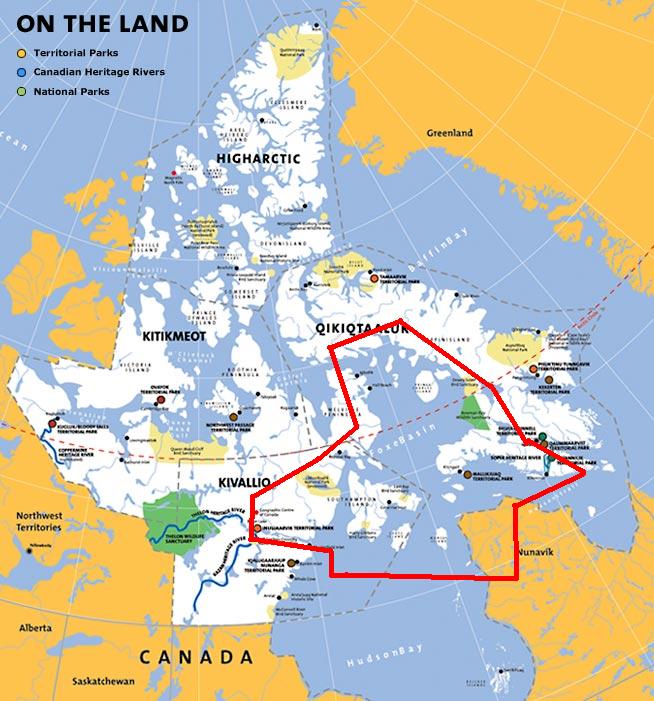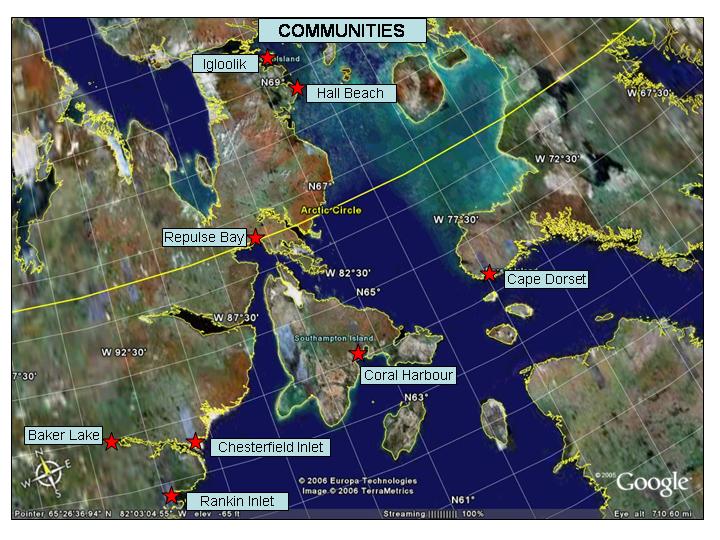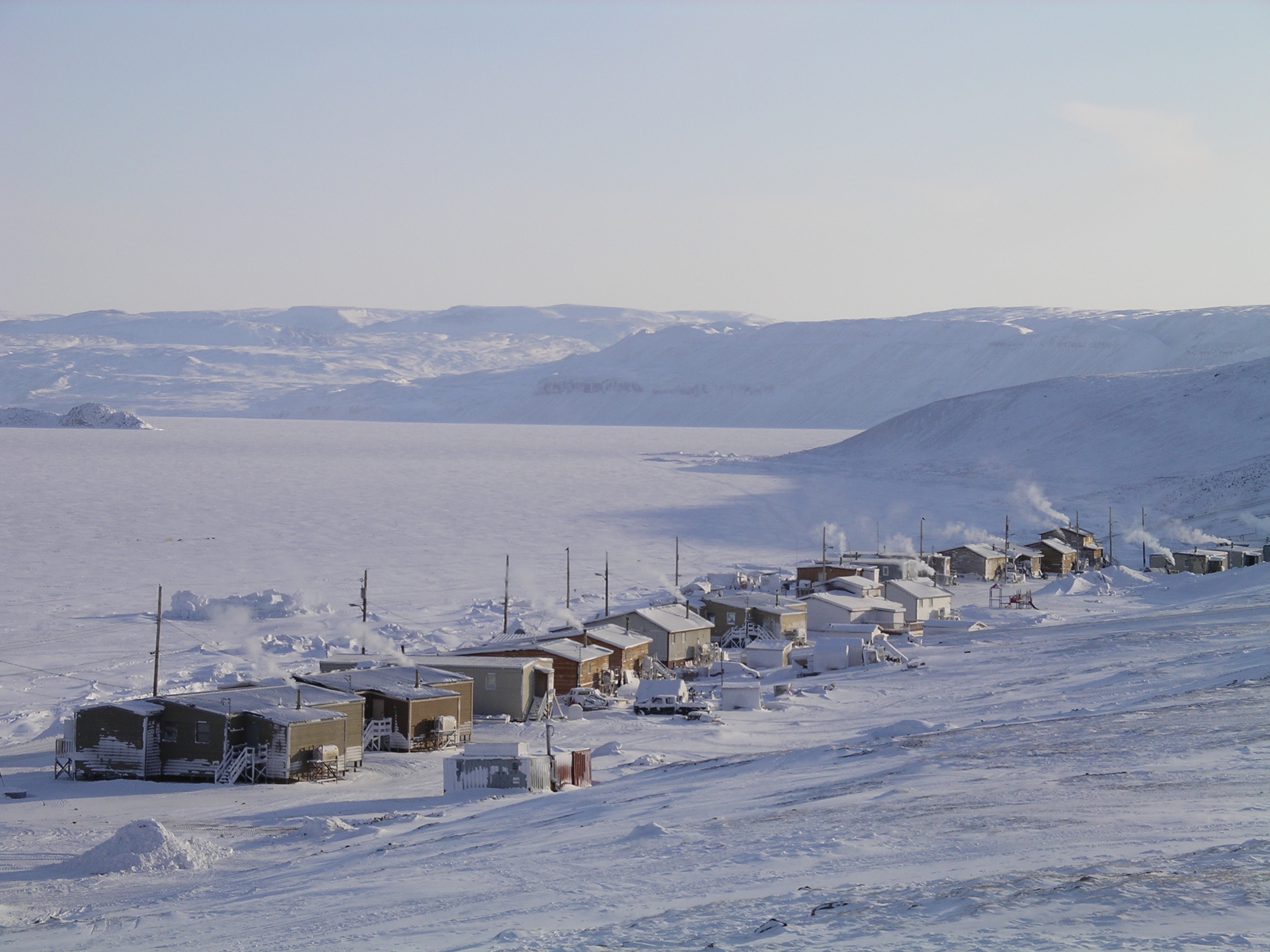
My study area is located in the northern Kivalliq and south eastern Qikiqtaaluk Regions of Nunavut Territory. It is delineated by the Foxe Basin polar bear subpopulation boundary and includes the sea and coastal areas of north western Hudson Bay and Foxe Basin. The extent is about 1000 kilometres from north to south (61N – 70N latitude) and 850 kilometres from east to west (71W – 91W longitude). The total area is approximately 300,000 square kilometres.

There are seven Nunavut communities that harvest the Foxe Basin polar bears: Igloolik, Hall Beach, Repulse Bay, Coral Harbour, Chesterfield Inlet, Coral Harbour and Kimmirut . In addition, the northern Quebec communities of Akulivik, Ivujivik, Povungnituk, and Salluit hunt this subpopulation.

Goods and services arrive in all of these communities by air or sea. For local and regional travel people use snowmobiles, all terrain vehicle, motor boat and occasionally charter aircraft. All of these ground and sea travel modes are used when hunting polar bears.

The Foxe Basin polar bear subpopulation has received little research attention since the 1980s. The only ongoing data collection during the past two decades has been hunter harvest information. Luckily the hunter harvest data base includes many variables, some of which are useful for investigating harvest and demographic trends and changes associated with sea ice and climate conditions.